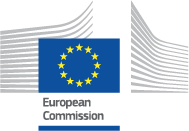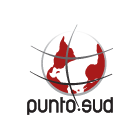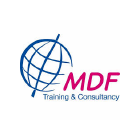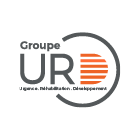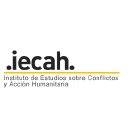WORKING WITH DG ECHO VISIBILITY | 2014 - 2020
VISIBILITY
Yes, the “Joint Visibility Guidelines for EC-UN Actions in the Field ” (2008) may still be referred to and they may become important if ever there is some conflict between the various texts on visibility. These Guidelines, however, were not drafted with humanitarian aid actions primarily in mind and they pre-date developments in social media so nowadays more specific and updated guidance also exists.
In practical terms the primary source for up to date information on visibility matters in humanitarian aid is DG ECHO's visibility web-site:
This web-site provides guidance on humanitarian aid visibility including the ECHO Visibility Manual and graphics that may be used by Partners.
Due to the co-existence of different guidance texts and the desire to avoid any confusion or conflicts, the following wording is included in the introduction of the ECHO Visibility Manual:
“The present Manual should serve as Partners' primary source of orientation when planning and implementing the standard visibility and communication activities as part of their EU-funded humanitarian aid action. […] The Manual complements existing general guidelines with advice particular to communicating about EU humanitarian aid, but does not replace or alter these. The EC-UN guidelines remain applicable for UN humanitarian partners when working with ECHO. In case of direct contradiction with this Manual, the EC-UN guidelines take priority. The same applies to the 2010 EU external actions manual.”
In other words, EU’s humanitarian partners such as UN should consult ECHO's visibility web-site and follow the ECHO Visibility Manual in their visibility and communication work as long as the requirements therein are not explicitly in conflict with the wording of the Communication and Visibility Manual for External Actions, in which case the latter prevails.
Yes. The requirements of standard visibility – namely the display of the humanitarian aid visual identity on project sites and the written and oral acknowledgement of the partnership – are mandatory and apply to all Partners and types of Actions.
Partners are generally encouraged to consider the implementation of above standard visibility (notably more elaborate communication actions targeting European audiences). However, such Actions – for which additional budget can be allocated after ECHO’s approval of a communication plan (the standard template can be found here ) – come on top of standard visibility.
Yes, in most cases there will be plenty of possibilities to comply with the visibility requirements even if display of the visual identity on the project site is not possible for security reasons. While standard visibility is a contractual obligation, there is an important degree of flexibility in how to implement it.
Standard visibility covers the display of the visual identity as well as the written and oral acknowledgement of the partnership. Therefore, Partners should consider to do e.g. more web or social media activities or consider producing audio-visual material addressing European audiences (the latter this may require applying for additional visibility budget “above standard”).
For more information on the activities that can be selected, please consult this page.
No. The Manual provides general guidance on the implementation of standard visibility, which is a contractual obligation in all EU-funded humanitarian projects. The concrete application depends on and may be adapted to the specific circumstances of the individual project. For each Action, the Partner must choose those measures which are considered to ensure visibility for the EU in the most effective way. The planned activities should be described as precisely as possible at the proposal stage. For more information, please consult this page.
According to the General Conditions 2014 (Art.7), Partners shall as a minimum take all necessary steps to publicise the fact that the European Union has funded the Action, and to bring the support given with these funds to the attention of the beneficiaries and of the general public, in particular through the media.
Therefore, Partners have a contractual obligation to perform standard visibility activities, including:
- display of the EU visual identity, including at the project site and at EU-funded supplies
- written and verbal recognition of the EU’s role in global humanitarian aid, in partnership with the agency implementing the action, when referring to an EU funded project in social media, media interviews, press releases, webpages, blogs, articles about the project, etc.
To implement standard visibility, expenses up to 0.5% of direct eligible costs can be covered by ECHO (up to a maximum of €8,000). Examples of standard visibility activities can be found on this website (left menu) divided per category. Details of the planned standard visibility should be provided in the single form chapter 9.
As regards “above-standard visibility”, ECHO generally invites Partners to consider undertaking more elaborate communication actions with the view of more effectively reaching European audiences. ECHO can make available additional budget for such activities, e.g. visits by journalists. In case your organisation plans to perform such additional communication activities a detailed communication plan must be submitted and approved by ECHO as part of the proposal.
Note that “above-standard” comes on top of standard visibility measures, which must be undertaken in all projects.
“Institutional communication” covers standard visibility and above-standard visibility and aims to highlight and inform about the European Union’s role in humanitarian aid. These activities are described in Section 9 of the Single Form.
“Operational communication” refers to products, which directly underpins the implementation of an action (e.g. training manuals, hygiene promotion material, advocacy leaflets, etc.). These activities must be described in Section 4 of the Single Form. Costs related to the production of such material, also when displaying EU visual identity, are not covered under the visibility line.
